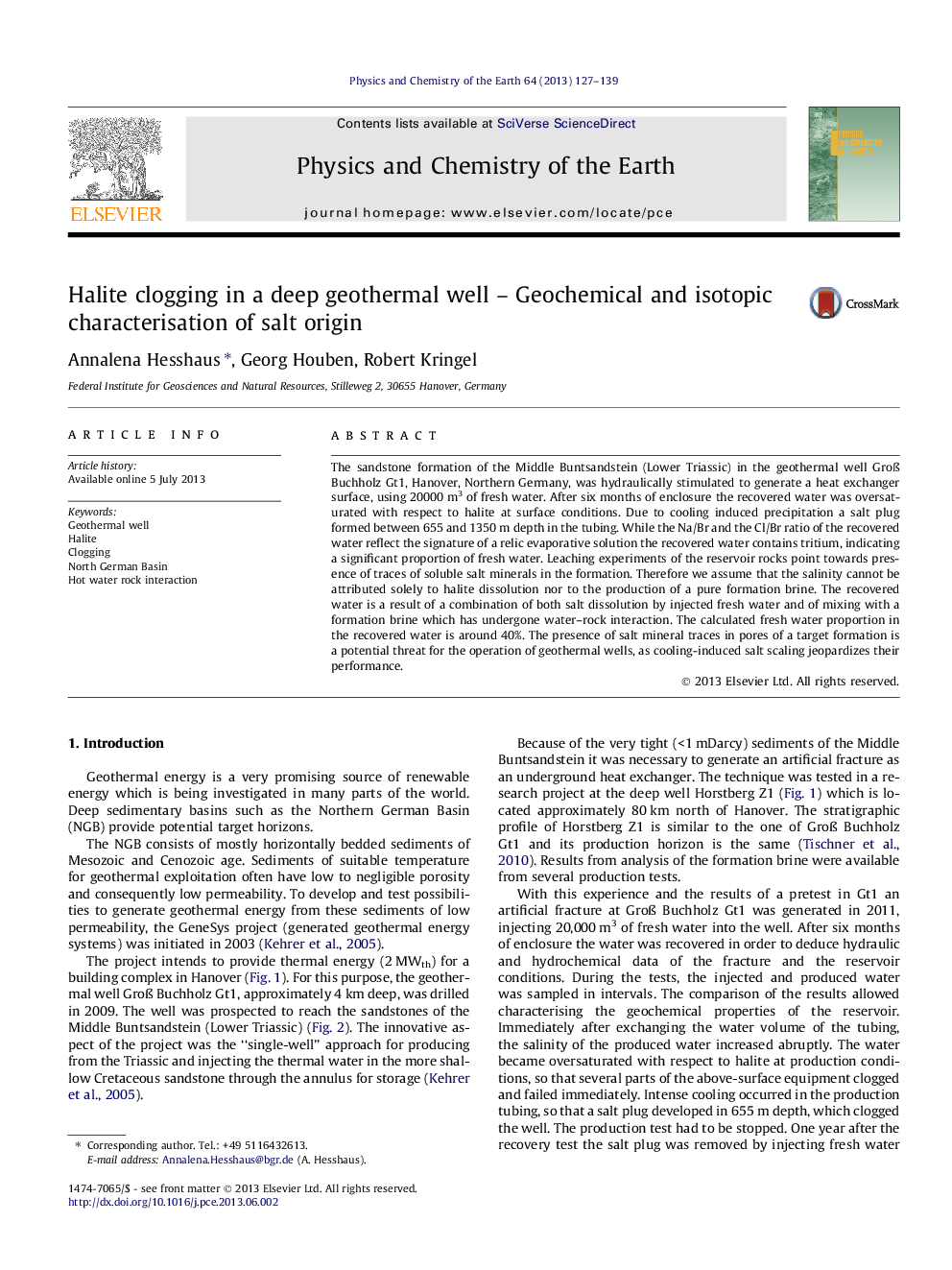| Article ID | Journal | Published Year | Pages | File Type |
|---|---|---|---|---|
| 6442036 | Physics and Chemistry of the Earth, Parts A/B/C | 2013 | 13 Pages |
Abstract
The sandstone formation of the Middle Buntsandstein (Lower Triassic) in the geothermal well Groà Buchholz Gt1, Hanover, Northern Germany, was hydraulically stimulated to generate a heat exchanger surface, using 20000 m3 of fresh water. After six months of enclosure the recovered water was oversaturated with respect to halite at surface conditions. Due to cooling induced precipitation a salt plug formed between 655 and 1350 m depth in the tubing. While the Na/Br and the Cl/Br ratio of the recovered water reflect the signature of a relic evaporative solution the recovered water contains tritium, indicating a significant proportion of fresh water. Leaching experiments of the reservoir rocks point towards presence of traces of soluble salt minerals in the formation. Therefore we assume that the salinity cannot be attributed solely to halite dissolution nor to the production of a pure formation brine. The recovered water is a result of a combination of both salt dissolution by injected fresh water and of mixing with a formation brine which has undergone water-rock interaction. The calculated fresh water proportion in the recovered water is around 40%. The presence of salt mineral traces in pores of a target formation is a potential threat for the operation of geothermal wells, as cooling-induced salt scaling jeopardizes their performance.
Related Topics
Physical Sciences and Engineering
Earth and Planetary Sciences
Geochemistry and Petrology
Authors
Annalena Hesshaus, Georg Houben, Robert Kringel,
